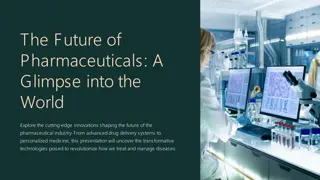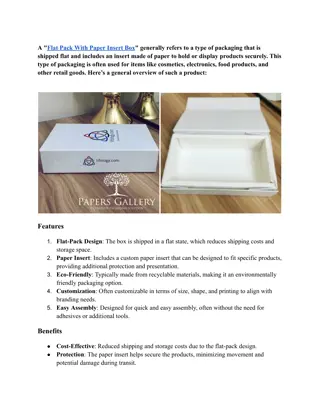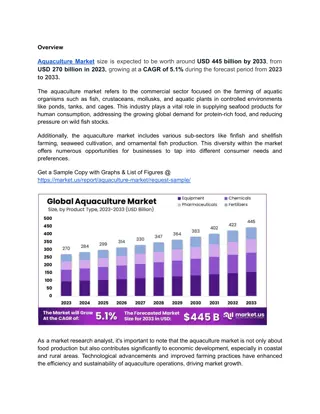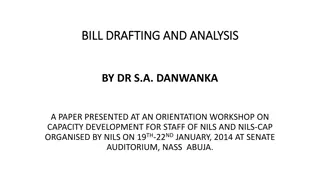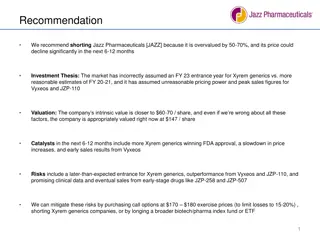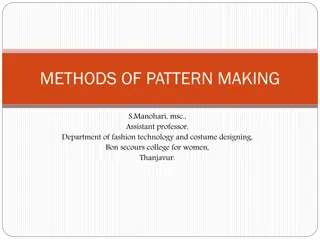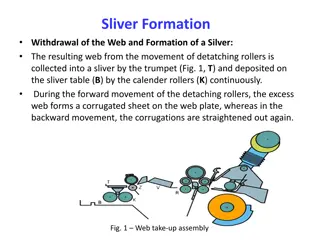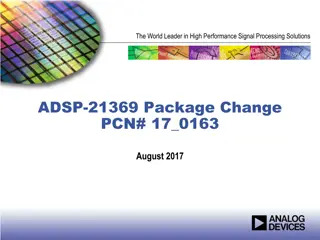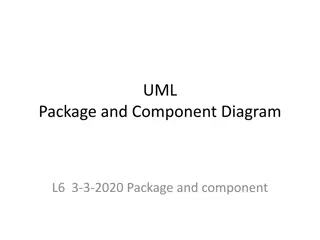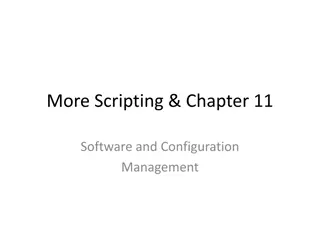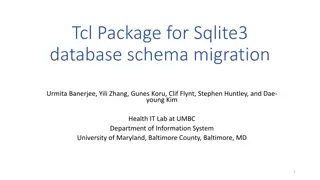Guidelines for Package Insert Drafting in Pharmaceuticals
Starting with a review of the Package Insert (PI) and Package Insert Leaflet (PIL) guidelines, this comprehensive guide emphasizes the importance of utilizing standardized text and references for different classes of medicines. It covers drafting techniques such as clear differentiation of headings, transcription of essential data, and addressing the use of trade names versus International Nonproprietary Names (INN). Additionally, it outlines when to refer to specific sources for different sections of the PI.
Uploaded on Sep 24, 2024 | 1 Views
Download Presentation

Please find below an Image/Link to download the presentation.
The content on the website is provided AS IS for your information and personal use only. It may not be sold, licensed, or shared on other websites without obtaining consent from the author. Download presentation by click this link. If you encounter any issues during the download, it is possible that the publisher has removed the file from their server.
E N D
Presentation Transcript
PRINCIPLES APPLYING TO THE PACKAGE INSERT (PI) Estelle Viljoen March 2013
Where to begin Re-read PI & PIL Guidelines Check if there are any standardised text for a specific class of medicine e.g ACE- inhibitors Check your main reference document whether it the latest possible version, and add from the latest editions of the reference any additional text
Where to begin cont. Use the acceptable references Ensure that all copies are clear and legible, also after copying Enlarge small print references
Drafting the PI Clearly distinguish between main headings and subheadings e.g. PHARMACOLOGICAL ACTION Pharmacodynamics Pharmacokinetics Summary of Clinical Studies (where appropriate)
Drafting the PI (cont.) Transcribe the required data to your draft PI. Cross-reference each appropriate reference used and preferably indicate/mark the statement on the reference Use right-hand column reference/comment/motivation Number the pages & the lines of the PI statement to the to indicate
Trade name/INN When to use Trade name (TN) & when to use the INN Pharmacological action INN Indications to the end of the PI use the TN, except for e.g. INN is secreted into breast milk, the concentration of INN is affected by another product The TN is used in the text in line with PN
When to use which reference for generic applications PHARMACOLOGICAL ACTION Innovator PI, Goodman & Gilman INDICATIONS In line with the innovator CONTRA-INDICATIONS Innovator PI, Martindale, USP-DI
When to use which references WARNINGS Innovator PI, Martindale, USP-DI INTERACTIONS Innovator PI, Martindale, USP-DI PREGNANCY AND LACTATION Innovator PI, Martindale, USP-DI
When to use which references DOSAGE AND DIRECTIONS FOR USE In line with the innovator PI SIDE-EFFECTS AND SPECIAL PRECAUTIONS Innovator PI, Martindale, USP-DI
When to use which references KNOWN SYMPTOMS OF OVERDOSAGE AND PARTICULARS OF ITS TREATMENT Innovator PI, Martindale, USP-DI
Headings of the PI SCHEDULING STATUS Scheduling published by MCC on recommendation by the Scheduling Committee requires a change to the legislation PROPRIETARY NAME AND DOSAGE FORM Proprietary Name as approved by the Naming Committee Status as determined and
Headings of the PI (cont.) COMPOSITION Active ingredient(s) and quantities Inactive ingredients (list only) PHARMACOLOGICAL CLASSIFICATION As determined by Regulation 25
Headings of the PI (cont.) PHARMACOLOGICAL ACTION Pharmacodynamics This section should start e.g.: Abc is a recombinant DNA-derived humanised monoclonal antibody . Provide information on the mechanism of action of the molecule(s). Only information relevant to the Indications may be included
Headings of the PI (cont.) PHARMACOLOGICAL ACTION (continued) Pharmacokinetics Provide information on Absorption, Distribution, Metabolism and Elimination and where appropriate on specific patient groups such as age, renal impairment and hepatic insufficiency, (when clinically relevant). Wherever possible it is advisable to have the following subheadings: Absorption, Distribution, Metabolism and Elimination and Special Populations
Headings of the PI (cont.) PHARMACOLOGICAL ACTION (continued) Summary of Clinical Studies This section will only be considered for inclusion if it is deemed essential information for the professions to make an informed decision, especially when important to consider the safety:efficacy relationship
Headings of the PI (cont.) INDICATIONS Self explanatory for the MCC to accept or reject depending on the supporting information CONTRA-INDICATIONS Absolute contra-indications e.g. hypersensitivity to any of the ingredients, diseases, age, metabolic or immunological factors, prior adverse reactions to the medicine or class of medicines pregnancy, concomitant
Headings of the PI (cont.) WARNINGS Relative contraindications should appear first, then warnings Specific safety issues, especially those that may lead to death or serious harm and may be required to be placed in a prominently displayed box and/or bolded font. Such information may be displayed at the top of this section, or may be displayed elsewhere in the package insert, where deemed appropriate
Headings of the PI (cont.) INTERACTIONS Information on clinically relevant interactions based on the pharmacodynamics and/or pharmacokinetics The order of presentation should be contraindicated combinations, those where recommended, followed by others Give detail of the mechanism of the interaction Interactions referred to in other sections of the package insert should be outlined and cross-referenced to the other sections Absence of an interaction - only if likely to have clinical interest Interactions with laboratory tests concomitant use is not
Headings of the PI (cont.) PREGNANCY AND LACTATION Pregnancy Possible scenarios: information from human or experimental studies, if appropriate. Inadequate information available The statement generally used when no information is available: Safety in pregnancy and lactation has not been established Pregnancy as a CI, add
Headings of the PI (cont.) PREGNANCY AND LACTATION Women of Childbearing Potential - Information on pregnancy testing, - Use of contraception - Any period during which contraception should be avoided
Headings of the PI (cont.) PREGNANCY AND LACTATION Lactation - Excreted in breast milk, mothers should not breast- feed their babies
Headings of the PI (cont.) DOSAGE AND DIRECTIONS FOR USE route of administration for each indication dose and dose interval, duration of treatment where relevant maximum recommended single, daily and/or total dose dosage adjustment for age, renal insufficiency, liver disease, where applicable monitoring advice, where applicable
Headings of the PI (cont.) DOSAGE AND DIRECTIONS FOR USE - Directions for use - Handling instructions - Incompatibilities
Headings of the PI (cont.) SIDE-EFFECTS AND SPECIAL PRECAUTIONS Side-Effects Information on all adverse reactions from clinical trials, post-marketing studies or spontaneous reports attributed to the medicine Clinical trials/studies and post-marketing data should be presented separately Classification of adverse reactions according to a system organ class (SOC) -MedDRA or WHOART
Headings of the PI (cont.) Side-Effects (cont.) Frequency reporting of Side-effects for NCEs: Clinical trial data: adverse reactions should be ranked according to the CIOMS convention i.e.: Very common ( 1/10); common ( 1/100, < 1/10); uncommon ( 1/1 000, <1/100); rare ( 1/10 000, < 1/1000); very rare ( 1/ 10 000), including isolated reports, not known (cannot be estimated from available data). For data from sources other than clinical trial data: When the frequency of occurrence is not available from clinical studies, the terms frequent or less frequent may be used
Headings of the PI (cont.) Side Effects (cont.) For post-marketing data and spontaneous report: No frequency categories can be allocated to reports from a spontaneous reporting system. Post-marketing studies: Information from post-marketing studies (e.g. phase IV studies) should be separate from that obtained from pre-marketing clinical trials, with frequency categories according to the CIOMS
Headings of the PI (cont.) Side-effects (cont.) Frequency reporting of Side-effects for MSM applications: The frequency of occurrence should be reflected as Frequent or Less frequent or Frequency not known . Frequent = very common ( 1/10); common ( 1/100, < 1/10) Less frequent = uncommon ( 1/1 000, <1/100); rare ( 1/10 000, < 1/1000); very rare ( 1/ 10 000), including isolated reports Frequency not known = frequency cannot be estimated from available data and posts-marketing data.
Headings of the PI (cont.) Side-effects (cont.) - If there are only a few adverse reactions in total, classification by SOC may be unnecessary Any adverse reaction resulting directly from an interaction should be included and cross-referenced to Interactions Adverse reactions which apply to the therapeutic, chemical or pharmacological class, which may not have been observed yet in relation to the product, but which are generally accepted as being attributable to other compounds in the class. The fact that this is a class attribution should be mentioned
Headings of the PI (cont.) Side-effects (cont) - Any adverse reaction warnings necessary for excipients or residues from the manufacturing process should be included In case of combination products, where it is known which particular adverse reactions are attributable to which component, the information should be presented separately
Headings of the PI (cont.) Special Precautions - Measures to be taken to avoid specific adverse reactions should be mentioned here - Any warnings/precautions necessary relating to excipients
Headings of the PI (cont.) Effects on ability to drive and use machines Specify whether the medicine has - no or negligible influence - minor or moderate influence - major influence on these abilities
Headings of the PI (cont.) KNOWN SYMPTOMS OF OVERDOSAGE AND PARTICULARS OF ITS TREATMENT Acute symptoms and signs and potential sequelae of overdosage Recommended management of overdose e.g. symptomatic treatment, or in relation to specific agonists/antagonists or methods to increase elimination of the medicine e.g. dialysis.
Headings of the PI (cont.) Identification In line with the registration dossier Presentation In line with the registration dossier Storage Instructions In line with the registration dossier
Headings of the PI (cont.) Registration Number Allocated only following registration. During the pre- registration phase it remains an application number Name and Business Address of the Holder of the Certificate of Registration Date of Publication of the Package Insert Date of registration followed by most recently revised MCC approved PI
Basic Principles Ensure that all copies are legible Ensure copies included in the submission Mark package Response to Recommendation - Proposed Package Insert Date all package inserts of all references are inserts Clinical clearly Committee i.e.
Basic Principles Check the PI & PIL for spelling and grammar Ensure all abbreviations are written out the first time it is used in the text Preferably have a peer-review process Provide some detail relevant to the application in the covering letter
Basic Principles The following apply to updating of PIs as well as responses to recommendations Underline all new inclusions [Square bracket and strike-through] all intended deletions [Dotted underlining for rewording] of a statement/section
Editorial Matters Use British English Drug = Medicine Physician = Medical practitioner/doctor Use decimal comma Spaces between numerical values and units (also apply to %) SI Units = e.g. mmol/l & mol/litre vs. l
Terminology Cockroft and Gault formula for renal impairment in adults Clcr(m /minute) For males: = [140 age] x Wt (kg) Scr( mol/ ) For females: = [140 age] x Wt (kg) x 0,85 Scr( mol/ )
Terminology Breast-feeding vs. breast feeding vs. breastfeeding Hypokalaemia vs. hypokalemia Neutropenia vs. neutropaenia Cyclosporine vs. ciclosporin Lignocaine vs. lidocaine Dysrhythmia vs. arrhythmia






